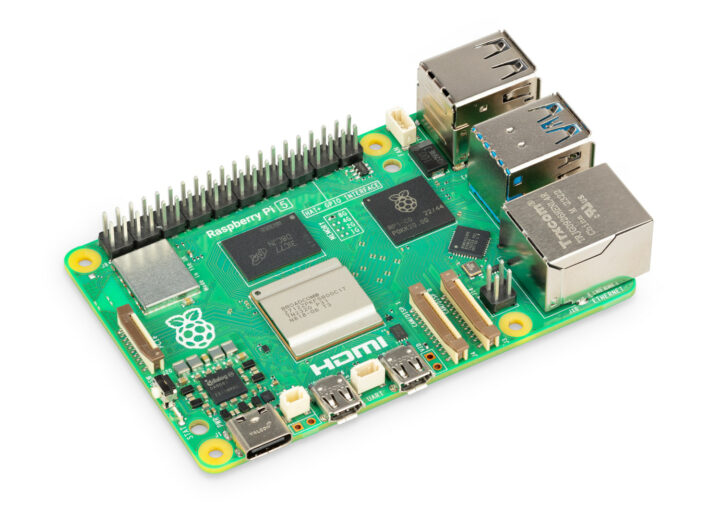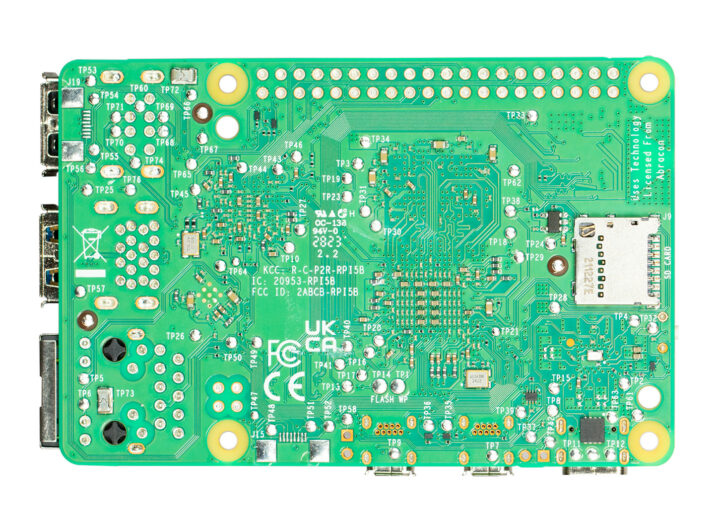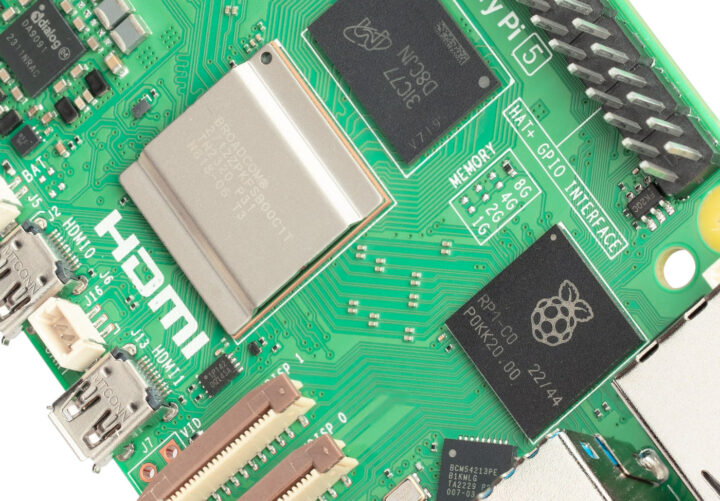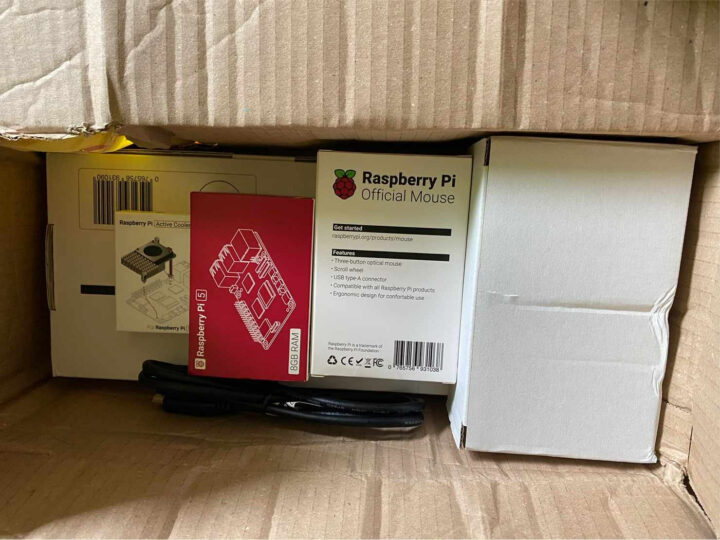The long-awaited Raspberry Pi 5 SBC is finally here with a powerful Broadcom BCM2712 quad-core Cortex-A76 processor clocked at 2.4 GHz, 4GB or 8GB memory, and the usual Raspberry Pi Model B form factor.
The Raspberry Pi 4 Model B was introduced in June 2019, so it took over four years to get a new model, and the Raspberry Pi 5 should deliver 2 to 4 times the performance, compete directly with Raspberry Pi-shaped Rockchip RK3588S SBCs such as the Radxa Rock 5A or Cool Pi 4 Model B and benefit from a larger community and better software support.
Raspberry Pi 5 specifications:
- SoC – Broadcom BCM2712
- CPU – Quad-core Arm Cortex-A76 processor @ 2.4 GHz with crypto extensions, 512KB per-core L2 caches, 2MB shared L3 cache
- GPU – VideoCore VII GPU @ 800 MHz with support for OpenGL ES 3.1, Vulkan 1.2, 4Kp60 HEVC decoder
- System Memory – 4GB or 8GB LPDDR4X-4267 SDRAM (at launch, but cheaper variants with 1GB and 2GB RAM should become available later on)
- Storage – MicroSD card slot with support for high-speed SDR104 mode (twice the performance over the Raspberry Pi 4)
- Video Output/Input
- 2x HDMI port up to 4Kp60 with HDR support
- 2x 4-lane MIPI camera/display transceivers
- Networking
- Gigabit Ethernet RJ45 port via Broadcom BCM54213PE transceiver; optional PoE+ support through Raspberry Pi PoE+ HAT
- Dual-band 802.11ac Wi-Fi 5
- Bluetooth 5.0 / Bluetooth Low Energy (BLE)
- USB – 2x USB 3.0 ports supporting simultaneous 5Gbps operation, 2x USB 2.0 ports
- Expansion
- 40-pin Raspberry Pi GPIO header
- PCIe 2.0 x1 interface (requires separate M.2 SSD HAT or other adapter)
- Misc – Real-time clock (RTC), powered from an external battery, power button, UART debug connector
- Power Supply – 5V/5A DC power via USB-C, with Power Delivery support
- Dimensions – 85 x 56 mm
Besides the new BCM2712 SoC with a much faster CPU (with Armv8 crypto extensions) and a new VideoCore VII GPU, the Raspberry Pi 5 gets twice the peak performance for the microSD card, HDR support, 4-lane MIPI interfaces (instead of 2-lane for the Pi 4), a PCIe 2.0 x1 FPC connector for compatible add-ons, a built-in RTC, a power button, a separate UART connector, and support for USB PD to power the board. Raspberry Pi OS is still the OS of choice.
The Raspberry Pi Model B form factor is starting to really show its limitations with the board featuring a non-standard PCIe connector, micro HDMI connectors, and the MIPI CSI/DSI connectors are shared, so I would not be surprised to see a Raspberry Pi 5 Model C in the future with a Pico-ITX form factor or similar, and potentially with extra features such as 2.5GbE networking. Alternatively, they may also leave this task to partners using a future Raspberry Pi Compute Module 5 (CM5).
This is also the first full-size SBC from the company using silicon designed by Raspberry Pi with the RP1 “Southbridge” providing the bulk of the I/O capabilities for Raspberry Pi 5, and delivering a step change in peripheral performance and functionality with over twice the USB bandwidth, two 1.5 Gbps MIPI transceivers, higher SD card performance, and a PCIe 2.0 x1 interface.
Pricing for the Raspberry Pi 5 is still very attractive, costing only $5 more than the Raspberry Pi 4 in equivalent configurations with the 4GB model going for $60 and the 8GB model for $80. Sales should start by the end of October, and the Raspberry Pi 5 will remain in production until at least January 2035, or about 11 years of guaranteed availability.
We’ve just received a complete kit with a Raspberry Pi 5 with 8GB RAM, an active cooler, a US keyboard, a mouse, and a power supply, so expect a review once I’m back from my holidays. In the meantime, more details may be found on the product page.

Jean-Luc started CNX Software in 2010 as a part-time endeavor, before quitting his job as a software engineering manager, and starting to write daily news, and reviews full time later in 2011.
Support CNX Software! Donate via cryptocurrencies, become a Patron on Patreon, or purchase goods on Amazon or Aliexpress








